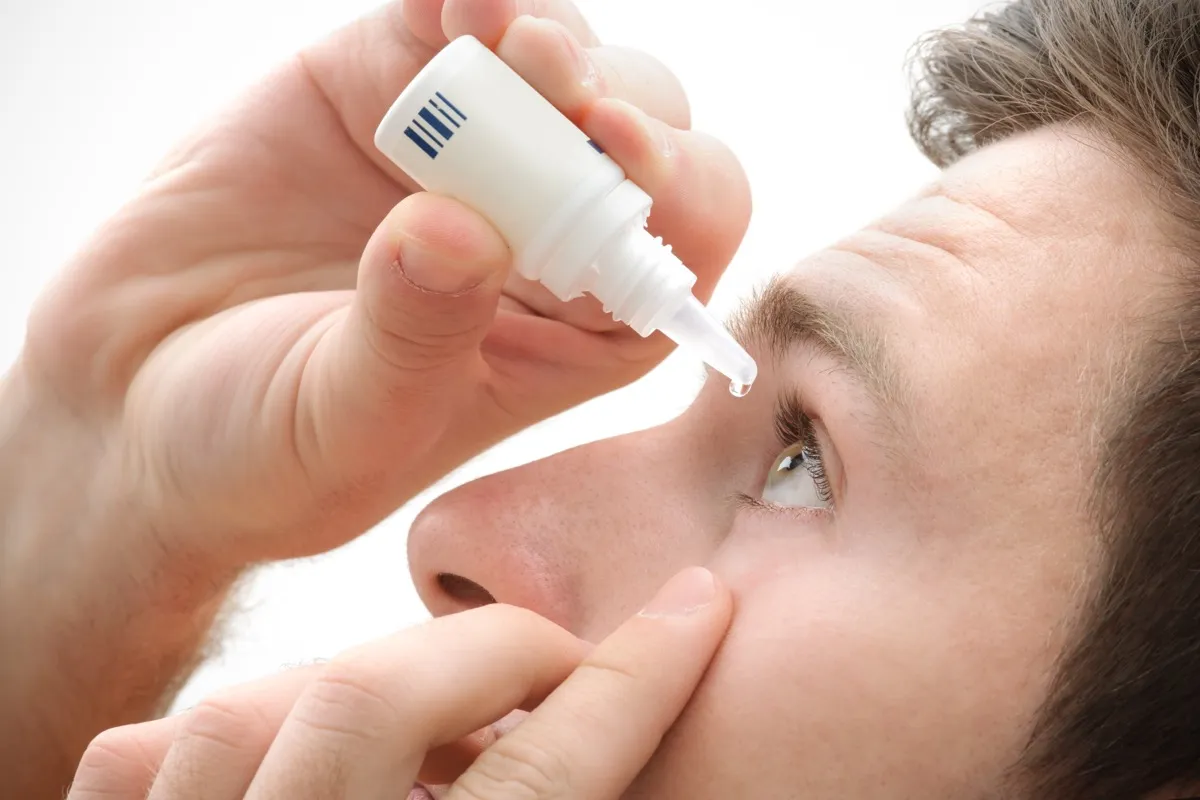Creating your own eye drops at home might seem like a convenient idea, but it comes with potential risks that outweigh the benefits. Tears, the natural lubricant for our eyes, consist of a mixture of oil, mucus, and water, along with essential components like oxygen, nutrients, and antibodies, all serving to protect the eyes from infection.
However, maintaining the sterile conditions necessary for eye drop preparation isn’t feasible in a typical home environment. Unlike the controlled settings of laboratories where commercial eye drops are manufactured, DIY concoctions are susceptible to contamination, posing a risk to your eye health.
Let’s delve into the scientific insights on homemade eye drops and explore safer alternatives to alleviate irritation, redness, or puffiness.
The Science Behind Homemade Eye Drops
You might be intrigued by the idea of using oils for eye drops due to their enhanced lubricating properties and prolonged effects. Research indicates that oil-water emulsions could be more effective than standard solution-based drops. However, studies on the safety of homemade remedies incorporating oils for dry eyes are scarce, with limited human trials conducted.
Here’s what we know about the efficacy of certain popular ingredients used in homemade eye drops:
- Castor oil: Initial findings suggest that an eye emulsion containing castor oil can lead to a more stable tear film for up to four hours. However, products like these have been discontinued in the United States.
- Coconut oil: While there are no human trials to substantiate its benefits, a study involving rabbits suggests that virgin coconut oil might be safe for human use. Nevertheless, it offers no significant advantage over conventional eye drops and saline solutions, and there’s a risk of contamination.
- Omega-3 and omega-6: Research on the topical application of these essential fatty acids is limited to cell studies. Further investigation is warranted to ascertain their benefits for eye health.
- Chamomile tea: Despite its perceived soothing properties, a study from 1990 revealed that using chamomile tea for eye washes could trigger allergies and inflammation. It’s advisable to steer clear of tea-based remedies due to potential contamination risks.
- The safest recourse is to opt for commercially available eye drops. Consult Healthline’s recommendations for the best eye drops tailored to address dryness and allergies.
Safe Home Treatments
Fortunately, there are natural remedies to alleviate eye irritation. Whether you’re grappling with pink, red, dry, or puffy eyes, consider these home treatments to stimulate tear production:
Immediate relief: Warm compress
Studies advocate for the efficacy of warm compresses in managing dry eyes. Applying a warm towel to the eyelids can enhance tear film and thickness. If you’re keen on using oils, apply them around the eyes before using a warm compress, ensuring they don’t come into direct contact with the eyes.
Tea bags: Cool compress
While washing the eyes with tea is discouraged, using cooled tea bags as compresses can offer soothing relief. Black tea, in particular, may help reduce puffiness. Remember to keep your eyes closed during the application and use a clean cloth as a barrier between the tea bag and your eyes.
Blinking and massage
Combat eye strain-induced dryness by consciously blinking more frequently or taking periodic breaks from screen time. Gentle eye massages can also stimulate tear production. In a pinch, yawning can aid in tear secretion.
Dietary interventions
Supplements containing omega-3 fatty acids have shown promise in alleviating dry eyes, particularly in individuals with conditions like blepharitis or Meibomian gland dysfunction.
Traditional Approaches: Over-the-Counter Eye Drops
Explore conventional remedies like over-the-counter eye drops, which can offer relief beyond dryness, addressing redness and puffiness. Opt for preservative-free variants to minimize the risk of irritation, and adhere to usage instructions diligently.
Seek Professional Assistance
If you experience persistent discomfort, seek medical attention promptly. Symptoms like double vision, blurred sight, or pain following the use of homemade eye drops warrant urgent evaluation by a healthcare professional.
Remember, eye health encompasses various factors, including diet, lifestyle habits, and overall well-being. Prioritize addressing the root cause of your eye issues for sustained relief, and consult your doctor if symptoms persist despite treatment.
- How the Pec Deck Works Your Chest - April 19, 2024
- Homemade Eye Drops: Risks, Benefits, and More - April 19, 2024
- SMART TOOTHPICKS COMPANY - July 29, 2023






